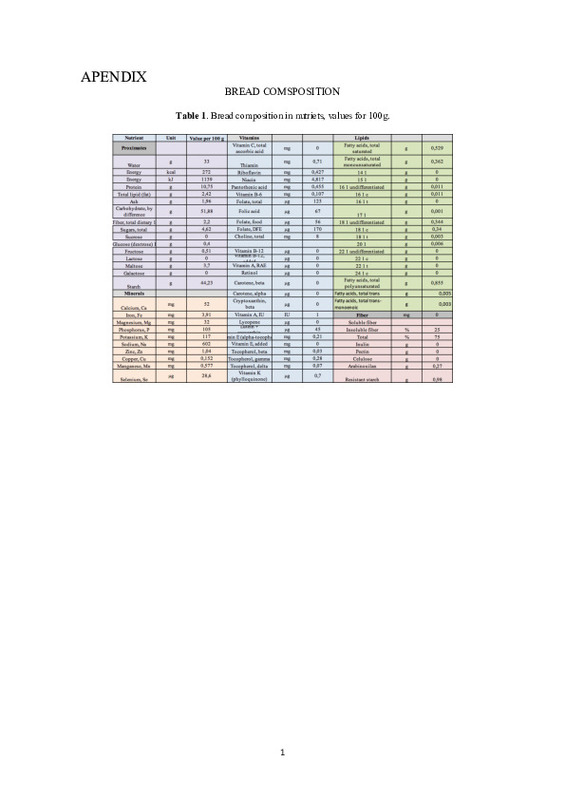|
Resumen:
|
[EN] The interaction between diet and gut microbiota, and ultimately their link to health, has become
the focus of huge research showing that diet and lifestyle have a strong influence on the gut
microbiota. That is why ...[+]
[EN] The interaction between diet and gut microbiota, and ultimately their link to health, has become
the focus of huge research showing that diet and lifestyle have a strong influence on the gut
microbiota. That is why there is a growing interest in resolving questions about the relation
between the gut microbiome and host metabolism.
The human intestine is densely populated by trillions of microbial symbionts. The symbiotic gut
microbiota helps nutrient absorption through the fermentation of dietary fibre, provides
protection from invading pathogens and helps to develop and regulate the immune system.
However, the mechanisms underlying interactions between diet, gut microbiome and host
metabolism are still poorly understood. Here, we discuss how meta-omics datasets can be
obtained through an in vitro model model of colonic fermentation in order to study how the food
that is consumed can shape the diversity and composition of the gut microbiota. In order to
analyze microbial community structure, tools and approaches such as next generation
sequencing (NGS) of 16S rRNA amplicons and bioinformatic analysis are used. The study will
be performed with bread that will be digested and then submitted to an in vitro fermentation
process with fecal inocula from healthy Spanish adults from Granada.
In the end, the influence of bread on the structure of the gut microbiota from different types of
fecal samples will be evaluated, as well as the variability of the microbioal taxonomy,
composition and alpha and beta diversity when fecal samples are analyzed before and after
fermentation and before and after a freezing treatment at -80 Cº. Our results suggest that despite
a loss of bacterial groups that alters the microbial composition, freezing the samples before
fermentation is not a serious problem because the effect of fermentation on the samples remains
significant in terms of richness, diversity and abundance of the main bacterial groups. This will
be studied in line with the main objectives of a larger project (Stance4Health) of developing a
personalised nutrition system that optimizes gut microbiota metabolism.
[-]
[ES] La interacción entre la dieta y la microbiota intestinal, y finalmente su vínculo con la salud, se
ha convertido en el foco de una gran investigación que demuestra que la dieta y el estilo de vida
tienen una gran ...[+]
[ES] La interacción entre la dieta y la microbiota intestinal, y finalmente su vínculo con la salud, se
ha convertido en el foco de una gran investigación que demuestra que la dieta y el estilo de vida
tienen una gran influencia en la microbiota intestinal. Es por eso que hay un interés creciente en
resolver las preguntas sobre la relación entre el microbioma intestinal y el metabolismo del
huésped.
El intestino humano está densamente poblado por billones de simbiontes microbianos. La
microbiota intestinal simbiótica ayuda a la absorción de nutrientes a través de la fermentación
de la fibra dietética, proporciona protección contra patógenos invasores y ayuda a desarrollar y
regular el sistema inmunológico. Sin embargo, los mecanismos subyacentes a las interacciones
entre la dieta, el microbioma intestinal y el metabolismo del huésped aún no se conocen bien.
Aquí, discutimos cómo los conjuntos de datos meta-ómicos se pueden obtener a través de un
modelo in vitro de fermentación colónica para estudiar cómo los alimentos que se consumen
pueden dar forma a la diversidad y composición de la microbiota intestinal. Con el fin de
analizar la estructura de la comunidad microbiana, se utilizan herramientas y enfoques como la
secuenciación de la próxima generación (NGS) de los amplicones del ARNr 16S y el análisis
bioinformático. El estudio se realizará con pan que se digerirá y luego se someterá a un proceso
de fermentación in vitro con inóculos fecales de adultos sanos españoles (Granada).
Al final, se evalua influencia del pan sobre la estructura de la microbiota intestinal de diferentes
tipos de muestras fecales, así como en la variabilidad de la taxonomía microbiana, la
composición, y la diversidad alfa y beta cuando las muestras fecales se analicen antes y después
de la fermentación y antes y después del tratamiento de congelación a -80ºC. Nuestros
resultados sugieren que a pesar de la pérdida de grupos bacterianos que altera la composición
microbiana, congelar las muestras antes de la fermentación no es un problema grave debido a
que seguimos vienod el efecto de la fermentación en las muestras en términos de riqueza,
diversidad y abundancia de los principales grupos bacterianos. Esto se estudiará de acuerdo con
los objetivos principales de un proyecto más grande (Stance4Health) de desarrollar un sistema
de nutrición personalizado que optimice el metabolismo de la microbiota intestinal.
[-]
|








